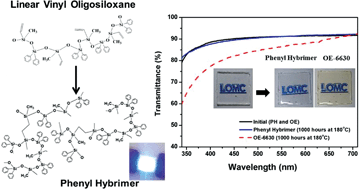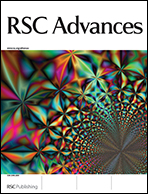The thermal resistance against discoloration of a high refractive index phenyl-siloxane hybrid material (hybrimer) was studied for LED encapsulation. The phenyl hybrimer was fabricated by a hydrosilylation reaction of linearly-structured vinyl oligosiloxane and hydrogen oligosiloxane resins using a platinum (Pt) catalyst. The linear oligosilxane resins were synthesized by a non-hydrolytic sol–gel condensation reaction of di-functional silane precursors, containing vinyl, hydrogen, and phenyl groups. The oligosiloxane, having a higher degree of condensation and molecular size compared with the branched oligosiloxane, provided low shrinkage and an effective curing behavior. The phenyl hybrimer showed high optical transparency and a refractive index of up to 1.57. In particular, the amount of Pt catalyst was minimized to inhibit yellowing of the hybrimer under long-term aging at 180 °C. These results suggest that the linear oligosiloxane-derived phenyl hybrimer could be used as a high performance LED encapsulant.

You have access to this article
 Please wait while we load your content...
Something went wrong. Try again?
Please wait while we load your content...
Something went wrong. Try again?


 Please wait while we load your content...
Please wait while we load your content...